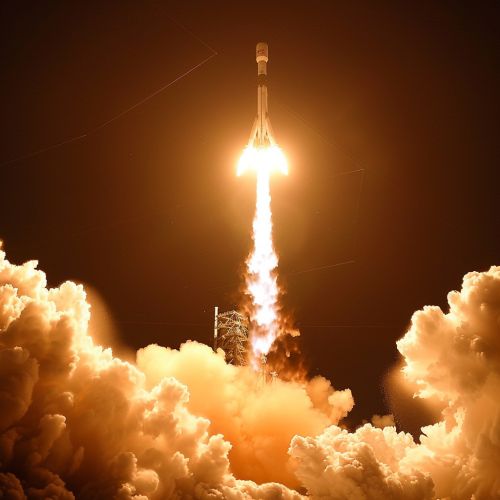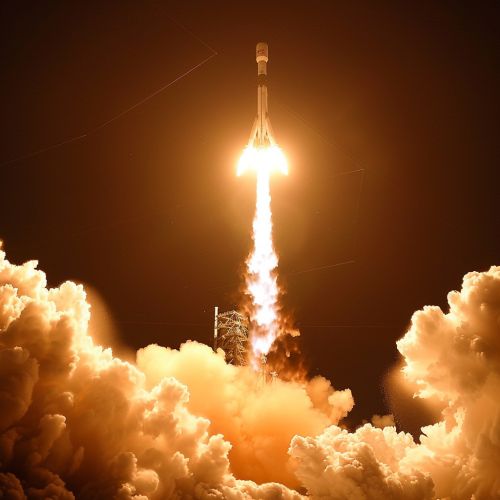Space Propulsion Analysis and Design by Ronald W. Humble (1995): Difference between revisions
(Created page with "== Overview == ''Space Propulsion Analysis and Design'' by Ronald W. Humble, published in 1995, is a comprehensive textbook that delves into the principles, methodologies, and applications of space propulsion systems. This work is widely regarded as a seminal text in the field of aerospace engineering, particularly in the specialized area of propulsion. The book provides an in-depth exploration of various propulsion technologies, their design considerations, performance...") |
No edit summary |
||
| Line 15: | Line 15: | ||
One of the core sections of the book focuses on chemical propulsion systems, which are the most commonly used propulsion systems in space missions. This section covers both liquid and solid propellants, their chemical properties, and the thermodynamic principles governing their performance. The book provides detailed equations and methodologies for calculating the thrust, specific impulse, and efficiency of these systems. | One of the core sections of the book focuses on chemical propulsion systems, which are the most commonly used propulsion systems in space missions. This section covers both liquid and solid propellants, their chemical properties, and the thermodynamic principles governing their performance. The book provides detailed equations and methodologies for calculating the thrust, specific impulse, and efficiency of these systems. | ||
[[Image:Detail-97257.jpg|thumb|center|A rocket launching into space, with flames and smoke trailing behind it.|class=only_on_mobile]] | |||
[[Image:Detail-97258.jpg|thumb|center|A rocket launching into space, with flames and smoke trailing behind it.|class=only_on_desktop]] | |||
=== Liquid Propellant Engines === | === Liquid Propellant Engines === | ||
Latest revision as of 08:34, 27 July 2024
Overview
Space Propulsion Analysis and Design by Ronald W. Humble, published in 1995, is a comprehensive textbook that delves into the principles, methodologies, and applications of space propulsion systems. This work is widely regarded as a seminal text in the field of aerospace engineering, particularly in the specialized area of propulsion. The book provides an in-depth exploration of various propulsion technologies, their design considerations, performance metrics, and practical applications in space missions.
Historical Context
The publication of Space Propulsion Analysis and Design came at a time when space exploration was undergoing significant advancements. The 1990s saw the development of new propulsion technologies and the refinement of existing ones, driven by both governmental space agencies like NASA and private aerospace companies. Ronald W. Humble's work was instrumental in consolidating the knowledge of the time and providing a structured approach to propulsion system design.
Propulsion Fundamentals
The book begins with a detailed examination of the fundamental principles of propulsion. This includes an overview of Newton's laws of motion, the conservation of momentum, and the specific impulse, which is a critical performance metric for propulsion systems. Specific impulse is defined as the thrust produced per unit of propellant flow rate and is a measure of the efficiency of a propulsion system.
Chemical Propulsion Systems
One of the core sections of the book focuses on chemical propulsion systems, which are the most commonly used propulsion systems in space missions. This section covers both liquid and solid propellants, their chemical properties, and the thermodynamic principles governing their performance. The book provides detailed equations and methodologies for calculating the thrust, specific impulse, and efficiency of these systems.


Liquid Propellant Engines
Liquid propellant engines are extensively covered, with discussions on bipropellant and monopropellant systems. Bipropellant systems use two separate propellants, typically a fuel and an oxidizer, which are mixed and combusted to produce thrust. Monopropellant systems, on the other hand, use a single propellant that decomposes exothermically in the presence of a catalyst.
Solid Propellant Motors
Solid propellant motors are another key topic, with detailed analyses of their design and performance characteristics. These systems use a solid mixture of fuel and oxidizer, which burns to produce thrust. The book discusses the grain design, burn rate, and the mechanical properties of solid propellants.
Electric Propulsion Systems
Electric propulsion systems are another major focus of the book. These systems use electrical energy to accelerate propellant to high velocities, providing a high specific impulse compared to chemical propulsion systems. The book covers various types of electric propulsion, including ion thrusters, Hall effect thrusters, and magnetoplasmadynamic thrusters.
Ion Thrusters
Ion thrusters are discussed in detail, with explanations of their operating principles, design considerations, and performance metrics. These systems ionize a propellant, typically xenon, and use electric fields to accelerate the ions to produce thrust.
Hall Effect Thrusters
Hall effect thrusters are another type of electric propulsion system covered in the book. These systems use a combination of electric and magnetic fields to accelerate ions, providing efficient propulsion for long-duration space missions.
Nuclear Propulsion Systems
The book also explores nuclear propulsion systems, which use nuclear reactions to produce thrust. These systems have the potential to provide high specific impulse and are considered for future deep space missions. The book discusses both nuclear thermal propulsion, where a nuclear reactor heats a propellant, and nuclear electric propulsion, where a reactor generates electricity to power an electric thruster.
Hybrid Propulsion Systems
Hybrid propulsion systems, which combine elements of chemical and electric propulsion, are also covered. These systems aim to leverage the advantages of both types of propulsion to optimize performance for specific mission requirements.
Design Methodologies
A significant portion of the book is dedicated to the methodologies used in the design of propulsion systems. This includes the use of computational tools, optimization techniques, and the integration of propulsion systems with spacecraft. The book provides practical examples and case studies to illustrate the application of these methodologies.
Performance Metrics
The book emphasizes the importance of performance metrics in the evaluation of propulsion systems. Key metrics discussed include thrust, specific impulse, efficiency, and thrust-to-weight ratio. The book provides detailed equations and methodologies for calculating these metrics and discusses their implications for mission design.
Applications in Space Missions
The final sections of the book explore the practical applications of propulsion systems in various space missions. This includes discussions on launch vehicles, satellite propulsion, and deep space exploration. The book provides case studies of specific missions to illustrate the application of propulsion technologies in real-world scenarios.
See Also
- Rocket Propellant
- Ion Thruster
- Hall Effect Thruster
- Nuclear Thermal Propulsion
- Specific Impulse
- Thrust-to-Weight Ratio
References
- Humble, Ronald W., et al. Space Propulsion Analysis and Design. McGraw-Hill, 1995.
